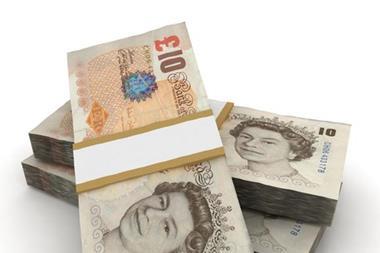The USA has a reputation for being trigger-happy when devising regulation to deal with corporate risk

This year’s US presidential elections are yet again demonstrating how the USA has a tendency to use regulation to solve its problems.
No sooner had JP Morgan revealed its $2bn (€1.6bn) trading loss in April than President Obama warned Washington DC that it may have to gold-plate the Dodd-Frank banking reforms to prevent similar occurrences.
It was a message he reinforced when speaking on the campaign trail. “You could have a bank that isn’t as strong, isn’t as profitable [as JP Morgan] making those same steps and we might have had to step in,” he said.
And yet as Mark Calabria, director of financial regulation at the Cato Institute - a respected academic institution committed to free markets - points out, the investment bank’s loss provides no grounds whatsoever for further regulation.
It wasn’t the American taxpayer that took the hit from the trading losses; it was JP Morgan and its shareholders.
Investment bankers know that trading is a zero-sum game. Even though JP Morgan lost out on its side of the deal, other investment banks profited. In short, where’s the risk?
Error-free economies
More significantly for regulation-happy America, argues Calabria, the president’s attitude “sets up a ridiculous standard of error-free financial markets”.
The mounting number of critics against this avalanche of rules threatens to overwhelm US businesses. The reaction to JP Morgan’s losses illustrates federal and state authorities’ general conviction that more regulation is the solution for errors in commercial life in general.
The 9/11 attack on the Twin Towers in New York and the financial crisis have only served to deepen authorities’ faith in rules.
“Federal regulation reaches nearly all aspects of modern life and is pervasive in the modern economy,” argues law professor Jonathan Adler of Cleveland’s Case Western Reserve University.
While some of these rules are undoubtedly beneficial to citizens and commerce, many of them present a high-grade risk to the broader economy.
The World Economic Forum agrees with this view. In its latest Enabling Trade Index, a two-yearly exercise, the USA continues to slide down the rankings.
Released in May, the index rates USA as 23rd overall - down four places - lying between Ireland and Malaysia. The main reason for the deterioration is the way in which US regulation intrudes on corporate life.
“The country’s performance has fallen in international comparison in almost all areas assessed by the index,” the report says.
“The regulatory environment appears less conducive to business than in previous years, falling by 10 ranks from 22nd to 32nd.”
However, ominously for a country that preaches transparency and good commercial behaviour, the index also cites a range of problems, including protection of property rights, undue influence on government and judicial decisions, and rising corruption.
In some areas America gets good marks, notably for efficient customs procedures both in and out of the entry points, and highly efficient distribution systems.
Understandably, the attack on the Twin Towers has left a mark. “As in previous years, protection from the threat of terrorism burdens the business sector with very high cost,” says the report.
Even so, insurance industry statistics show that the likelihood of Americans dying in a terrorist attack is many times smaller than that of being shot by a fellow citizen.
Putting the house in order
Something has to be done soon, argue Ike Brannon and Sam Batkins of centre-right thinktank the American Action Forum.
“US businesses will suffer if Washington does not begin to regulate its regulators at the same time as it tries to put its fiscal house in order,” they said in a research paper earlier this year.
But this doesn’t appear to be happening. For instance, the president’s 2012 budget boosted funds for regulatory agencies, among them the Internal Revenue Service.
No fewer than 5,100 extra agents will be hired this year to monitor individual and commercial compliance. By then, the IRS’s workforce will number 100,000.
At the same time, in the wake of the Dodd-Frank reforms, the Commodities Futures Agency will acquire nearly 550 new staff to implement those reforms.
Critics argue that the White House, under a series of Republican and Democratic presidents, has been overriding Congress and piling regulation on regulation through executive orders.
“Over the past decades, the scope, reach and the cost of federal regulations have increased dramatically,” says Adler.
Red-tape factory
The Republican party has made regulation an election issue and refers disparagingly to the “red tape factory in Washington DC”.
Republicans are also trying to push through laws that would prevent the White House and numerous federal agencies - particularly those responsible for health, safety and environment - from adding more regulations without its approval.
Dubbed REINS, the full title of the laws is Regulation of the Executive in Need of Scrutiny. As such, it is an attempt to regulate the White House as well as federal regulatory agencies.
But REINS’ effect would be relatively modest. It seeks Congressional approval for “major rules” only - equivalent to only 5% of all federal regulations handed out in any one year. The cost of these alone is $100m (€82m) a year.
The Federal Register, the official compendium of regulation, tells the story of the last 60 years. In 1950 the Federal Register was made up of 11,000 pages compared with more than 80,000 a year now.
Over the past decades, the scope, reach and cost of federal regulations have increased dramatically’
Jonathan Adler,
Case Western Reserve University
And there’s no stopping it. At the last count, a further 4,000 regulations were moving through the pipeline, and as they become law, their impact on the business world will be immense.
The new rules will cover everything from greenhouse gas emissions reporting and proxy disclosures to electronic fund transfers. Take just the Dodd-Frank banking reforms: this act by itself will require another 200 federal rule-makings.
The price of this federal regulatory tsunami is immense - it amounts to about $1.5 trillion (€800bn) a year. And that’s just taking into account the stuff coming out of Washington DC.
Under the federal system, states have the right - and certainly the enthusiasm - to embroider federal law.
State powers
Take price-gouging, which is on most states’ law books and is one of many regulations that directly affects most kinds of retail operations.
More than 30 states have price-gouging laws on their books, often invoked after a natural disaster. In California, for example, they are designed to prevent over-charging during emergencies and apply to everything from medical supplies to home-heating oil.
Although the definition varies from state to state, a price-gouging event is deemed to occur if a price more than 10% higher than the pre-emergency price is charged.
But regulators are entertaining complaints that were never intended to come under the law’s scope, and many companies settle over allegations of price-gouging simply because of the high cost of lengthy litigation with states.
“In popular usage, consumers complain about price-gouging just about any time they do not like a price,” points out Michael Giberson of Texas Tech University.
Common targets are the price of 3D movie tickets, cables for high-definition television, and even fresh flowers.
The penalties also differ from state to state. In Mississippi, an executive can end up in jail over price-gouging, and so can anybody deemed to be involved in the sale of the product - supplier, wholesaler, distributor and retailer.
There is some good news. Earlier this year President Obama ordered a government-wide review of the existing regulations “to remove outdated regulations that stifle job creation and make our economy less competitive”.
But don’t wait up. It’s 30 years since President Reagan passed an executive order law requiring every new regulation to be subjected to a cost-benefit analysis. Yet today there is such a vast accumulation of outdated regulations that it will take many years to clean them up.
The powerful Environmental Protection Agency has only just officially recognised that saccharin is no longer a hazardous material and that milk should not be included in rules against oil spills. The latter correction alone will save dairy farmers about $140m a year.
A brief history of America’s wealth taxes
Tax rates - individual and corporate - are a big issue of the 2012 presidential elections. In just the most recent example of America’s long flirtation with higher taxes on the rich, President Obama has pledged to take more from the wealthiest Americans - the so-called Buffett tax - and repeal President Bush’s tax cuts on those earning over $250,000 a year.
In another example of states acting independently, Oregon, Maryland and California have already raised taxes on the wealthy but attracted far lower revenues than predicted.
Meanwhile, Americans are voting with their feet: there has been a steady migration of people and businesses to lower-taxed states, such as Delaware, during the last decade.
Over the years, the USA has swung wildly on the issue of tax rates. In the 1920s, Treasury secretary Andrew Mellon dropped the top income tax rate on investment income from 65% to 24%, and managed to reduce the national deficit at the same time.
In the early years of the Depression, President Hoover hiked the top rate to 63% on a temporary basis and saw revenues from income tax collapse by half.
The response of Hoover’s successor, Franklin Roosevelt, to deepening depression was the Revenue Wealth Tax Act of 1935, which raised the top marginal income tax rate on individuals to 75%.
Result? Capital “went into hiding”, as corporate governance authority Jerry Markham, of Florida International University College of Law, pointed out last year in a research paper, The Politics of Executive Pay. Yet tax rates went still higher.
During the Second World War, the highest marginal rate shot up to 94% before Harry Truman, Roosevelt’s successor, cut it to 85.4%. Daringly, he also dumped corporate rates to 38% from a punitive 90%. This time tax revenues increased.
In the 1960s, Congress introduced the Alternate Minimum Tax to spread wealth more widely. It was a failure.
Next, President Reagan slashed individual and corporate rates and saw a big increase in tax receipts.
It could be argued that wealthy Americans already do more than their bit.
The top 1% of earners pay nearly 40% of all income taxes, while claiming just 20% of all income. On the other side of the coin, nearly half of all households pay no federal tax at all.




















No comments yet